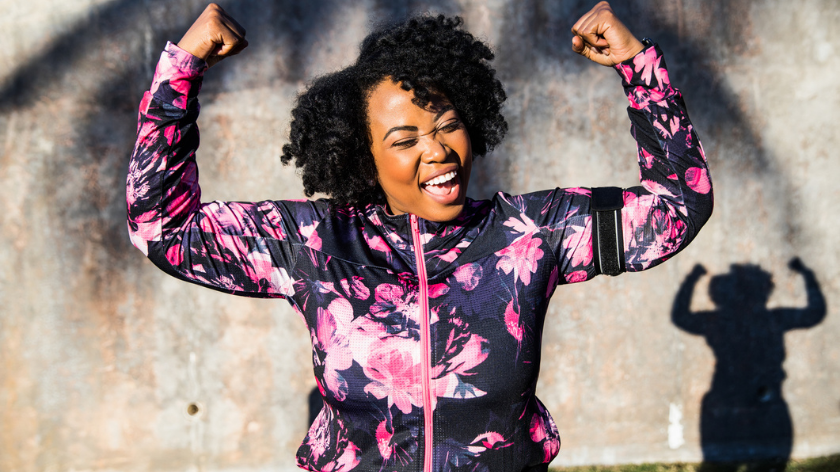There are 1440 minutes in a day – spend a minimum of 30 minutes for exercise.
ACSM and CDC recommendations state that:
- “All healthy adults aged 18–65 years should participate in moderate intensity aerobic physical activity for a minimum of 30 minutes on five days per week, or vigorous intensity aerobic activity for a minimum of 20 minutes on three days per week.”
- “Every adult should perform activities that maintain or increase muscular strength and endurance for a minimum of two days per week.”
What does that mean for me? Let’s take a look at what components to include in your training regimen:
Cardiovascular/aerobic exercise: increase your heart rate and breathing with activities like walking, running, rowing, biking, swimming, jumping rope or taking an aerobics class.
Strength/resistance training: build muscle and increase strength by utilizing dumbbells, barbells, kettlebells, or traditional exercise machines in a gym setting. You don’t necessarily need access to a gym though – you can use resistance bands, sandbags, or simply your own body weight as resistance.
Flexibility/mobility training: improve your range of motion, posture, lengthen your muscles and potentially decrease risk of injury and soreness when you stretch, practice yoga or Pilates.
Above and beyond the various types of exercise – other important considerations for a well-rounded approach are the things you are doing outside your training hours. With your exercise session just being a small fraction of your day – there are things you can do during the remaining of the 24 hours that you have in your day to help prep you for your next training session.
Nutrition: fuel your body with an appropriate balance of protein, carbs and fat coming from unprocessed, whole food sources. Make sure you consume enough prior to your exercise session to ensure you have adequate energy to make it through your workout and then replenish after your training session to re-fuel.
Hydration: drink fluids (mainly water) to replace fluids lost during exercise; especially when the weather is hot and humid.
Sleep: never underestimate the power of a good night’s sleep; aim for 7-9 hours a night.
Rest days: while exercising, you are placing (good) stress on your body and it is during your rest and recovery days that you are actually getting stronger. Schedule complete or “active rest” days where you allow your body to recover so that you are ready for the next training session. This can include going for an easy-paced walk, a gentle yoga class or taking a complete rest day. This also helps prevent over-use injuries.
In the end, the best workout is going to be one that you enjoy, one that you look forward to and one that keeps you consistently training on a regular basis. For positive reinforcement and encouragement – consider group training with friends, working with a personal trainer, using a fitness tracker, or rewarding yourself with new fitness workout gear when you hit certain milestone goals. Celebrate your success along the way and stay motivated to become the best version you can be for your overall health.
Janine is an Implementation Manager with Vitality. She holds a B.S. in Exercise Science/Sport Management from Rutgers University, as well as many certifications within the fitness and nutrition industry. She loves being a spectator at her daughters’ athletic events, participating in water sport activities with her family, writing on sticky notes, over-consuming almond butter and taking hot yoga classes. For relaxation, she enjoys baking, taking naps in hammocks and listening to podcasts.







